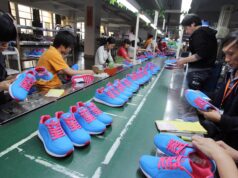Test sieves are becoming increasingly popular in the laboratory and industrial testing settings. They provide a simple, easy-to-use method to quickly analyze a wide range of materials. By using test sieves, you can get accurate results that are repeatable and consistent. But why should you use them? Here are the different benefits of using test sieves and how they can help improve your testing operations, the different types of test sieves available, their features, and what kinds of materials they’re best suited for. So read on for some tips on how to ensure accuracy when using test sieves in your lab or facility.
What Are The Test Sieves?
Test sieves are wire-mesh screens or cylinders with perforations of a specific size which are used to separate particles based on their size. They have commonly used in grain, seed, and soil testing laboratories, but can be suitable for a variety of other materials too. This test comes in different sizes and the meshes range from very fine to coarse, depending on the material being tested. A line of test sieves is used to separate particles of different sizes, with each sieve having a smaller mesh than the previous one. Additionally, a pan (the bottom container) is usually added to catch whatever particles have not been caught by the sieves. Maybe you’ve seen them in sifting flour or sugar.
Types Of Test Sieves Available
This test can be made of woven wire mesh, perforated metal sheets, or stainless steel. The woven wire mesh type is mostly used for grain, seed, and soil testing while the perforated metal sheet type is suitable for a variety of different materials. Additionally, there are test sieves that come with interchangeable meshes so that more than one size can be used at once. This is a great advantage as it allows for quick and accurate testing without the need to switch out sieves. Another type is the analytical sieve, which features an internal calibration system that ensures accuracy. And, of course, stainless steel sieves are great for use in wet and corrosive environments.
Stainless Steel Sieve
These test sieves are typically used for a variety of materials, but they’re especially suited for use in wet and corrosive environments. The stainless steel material makes them resistant to rust and wear, ensuring that they last longer than other types of sieves. They’re great for separating hard materials like nuts, bolts, and other small objects. And, their internal calibration system ensures accuracy and repeatability. For example, they’re used in the food industry to separate particles of food and to make sure that no contamination is present.
Analytical Sieve
This sieve is equipped with an internal calibration system that allows for accurate and repeatable results. It features precision meshes that facilitate reliable particle separation and a lid that prevents dust from entering the system. Additionally, it comes with a digital display so you can easily monitor the process. Maybe most importantly, the calibration system ensures that results are consistent and accurate. It’s used in a variety of industries including pharmaceutical, agriculture, food processing, and construction. And, the best part is that it requires minimal maintenance and is easy to use. For example, you can determine the exact size of each particle being tested as well as the sample weight.
Benefits Of Using Test Sieves
Using test sieves ensures accurate results with minimal effort and time. They are easy to use and require minimal maintenance and setup costs, making them highly cost-effective for labs or facilities with frequent material testing needs. Additionally, other testing methods can take significantly more time for analysis than using test sieves, which makes them ideal for high throughput applications. Because they are non-destructive, test sieves can be used multiple times on the same sample without compromising the accuracy or repeatability of results. Benefits also include improved safety, as they can be used without having to handle the material being tested. They provide consistent results with minimal operator error. They can be used to separate materials of different sizes in a range from very fine particles to larger ones.
Tips On Ensuring Test Sieve Accuracy
To get accurate results with test sieves, it’s important to select the right size and type of mesh for your specific application. Additionally, using the same mesh over multiple batches of samples is recommended, as this will help ensure consistent results. Make sure that you tightly secure the sieve to its holder or pan so that there are no gaps or leaks in the system. Also, be sure to follow all instructions carefully when handling materials and cleaning your testing equipment after each use. Remember to check calibration regularly to make sure that you’re getting accurate readings from your test sieves. This will help ensure the accuracy of your results and make sure that you get reliable, repeatable results every time. For example, you can use NIST traceable standards to ensure accuracy.
What Materials Are Suitable For Test Sieves?
Test sieves can be used to analyze a variety of materials such as grain, seed, soil, coal, cement, chemicals, metals, and even food products like sugar or flour. Whatever material is being tested should fit into the mesh size of the test sieve to ensure accurate results. Additionally, when using wet materials you should always use stainless steel sieves as these are more resistant to corrosion than other types of test sieves. This is especially important for materials that will be exposed to moisture or corrosive environments. And, it’s important to note that some materials may require special preparation before testing. For example, if the material is too dense or large for the test sieve then you should pre-grind or homogenize it before testing.
Test sieves provide a reliable and cost-effective way to analyze materials. They can be used in many industries and require minimal maintenance, making them an ideal choice for labs or facilities with frequent material testing needs. Additionally, they are easy to use and provide consistent results with minimal operator error. It’s important to keep in mind that the right type of mesh should always be chosen to ensure accurate results as well as to prepare your material accordingly before testing. This will help you get reliable, repeatable results and the most out of your test sieves. With all this in mind, you can now confidently choose test sieves for your material analysis needs. And, you’ll be sure to get reliable and accurate results every time.














